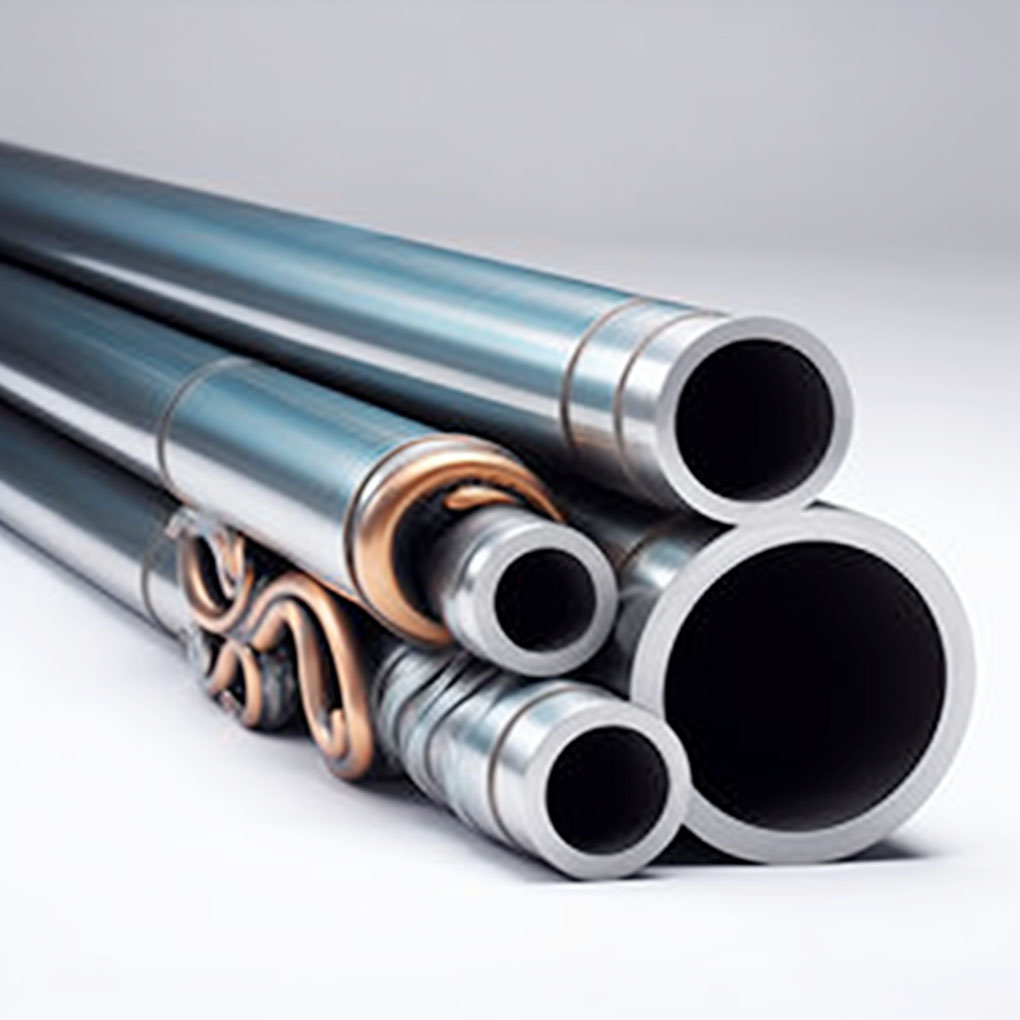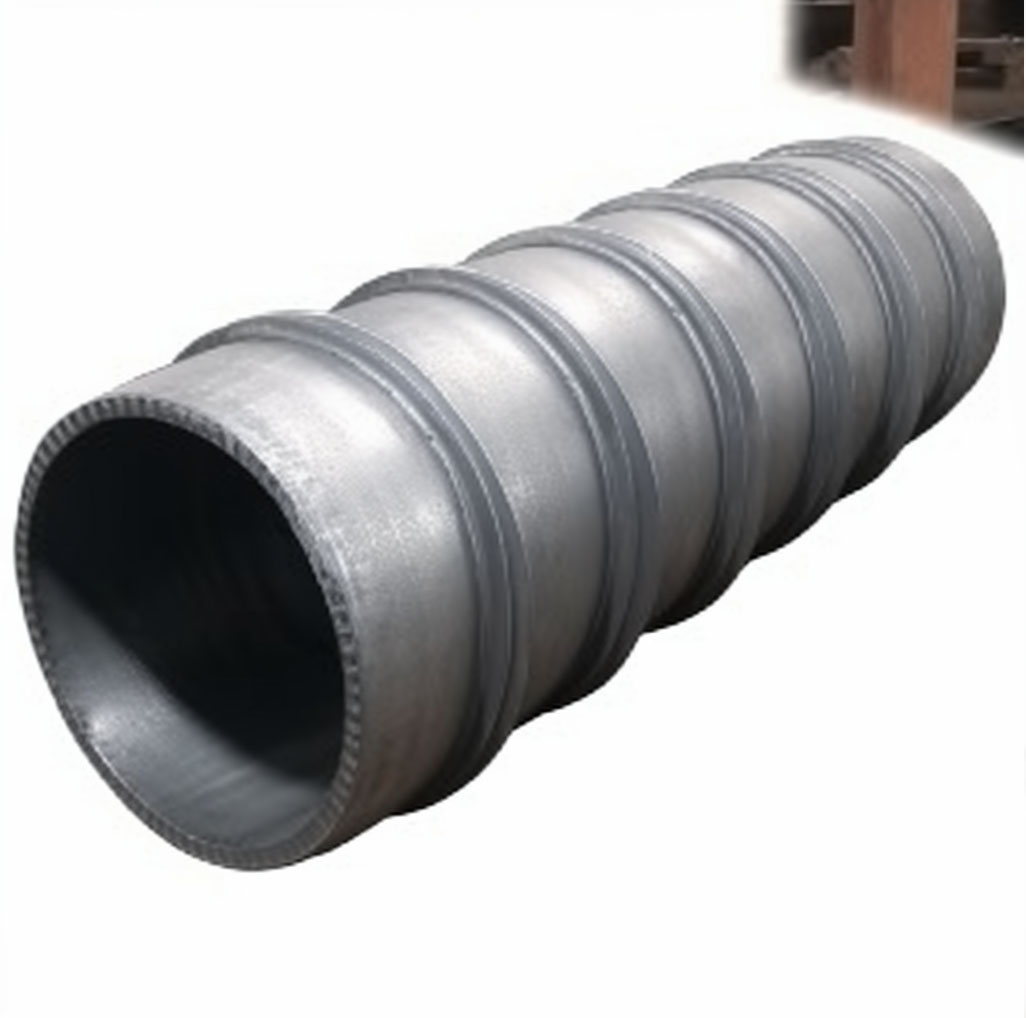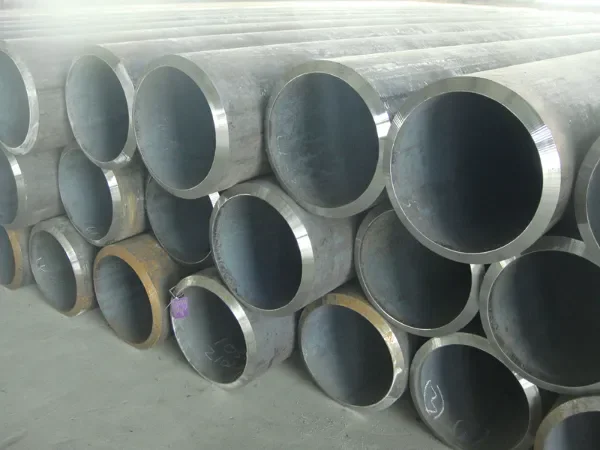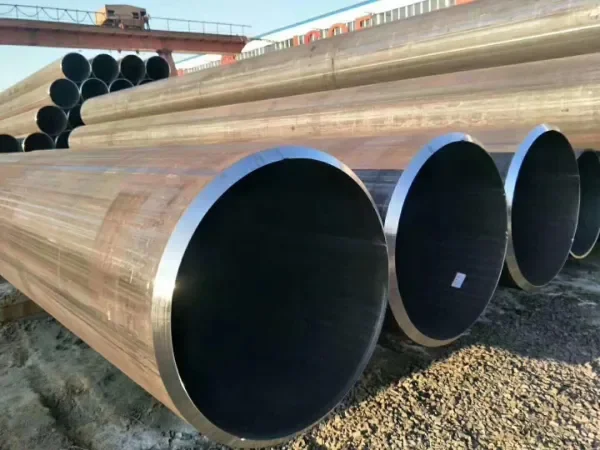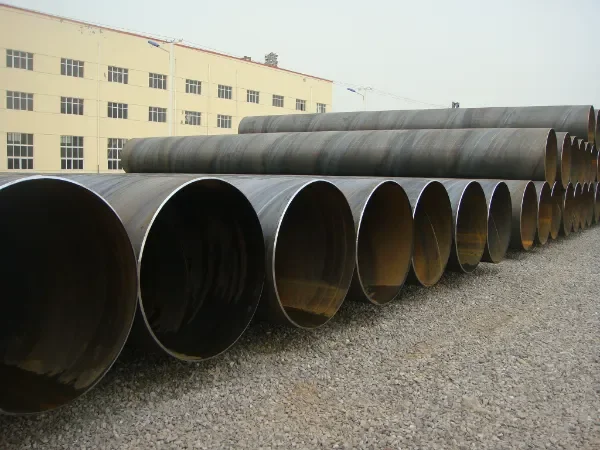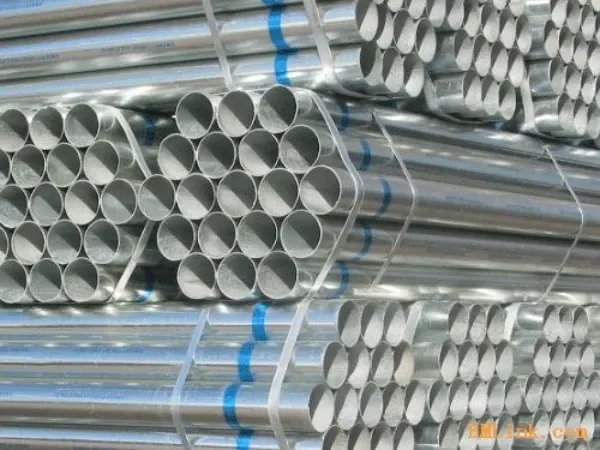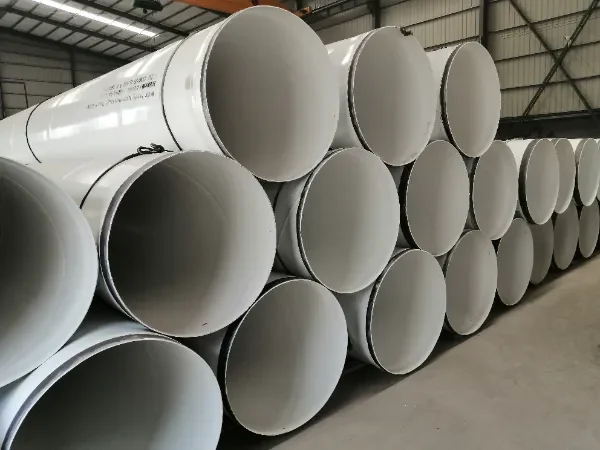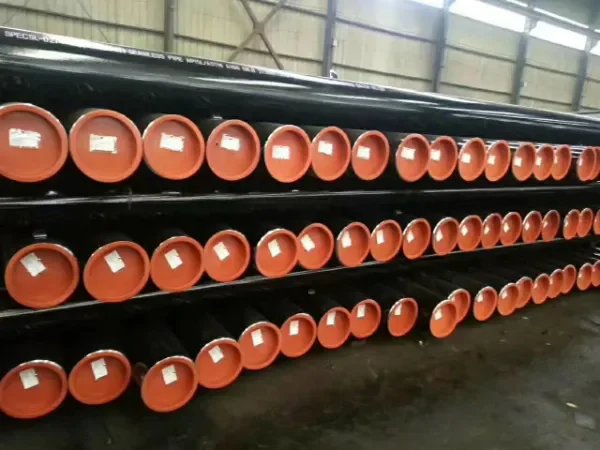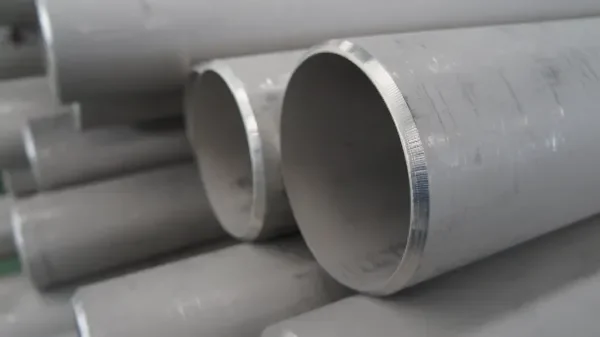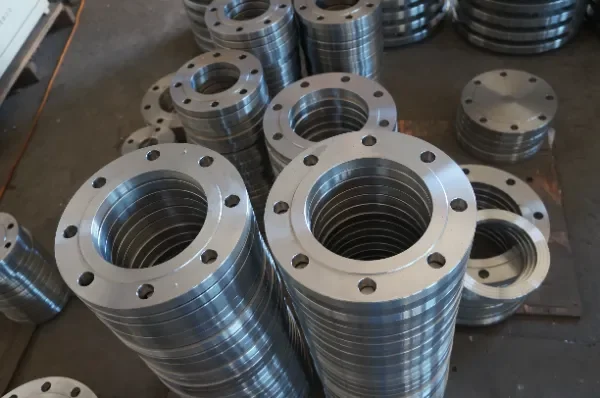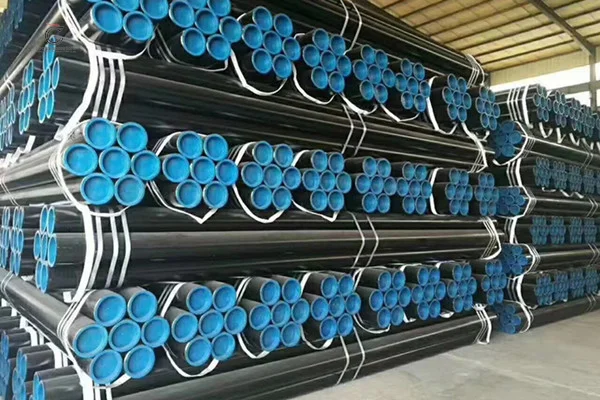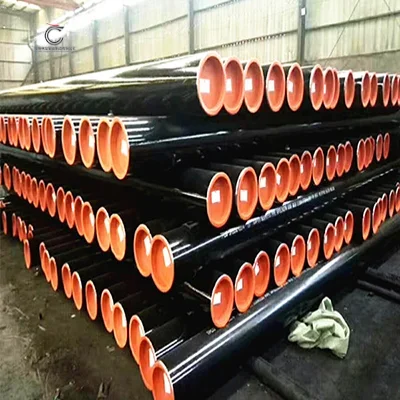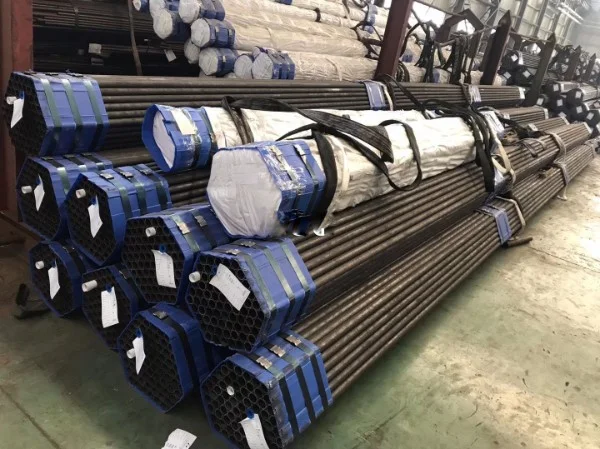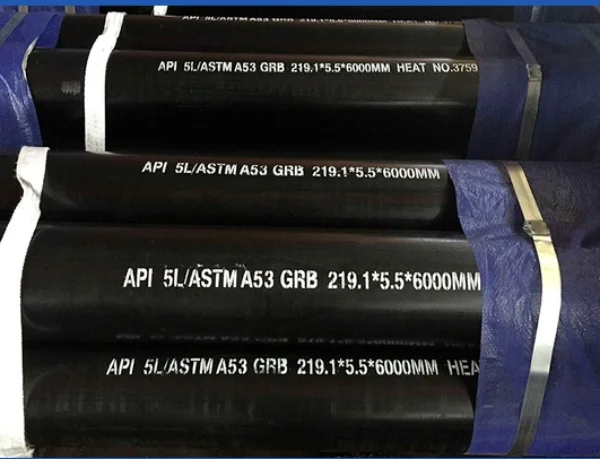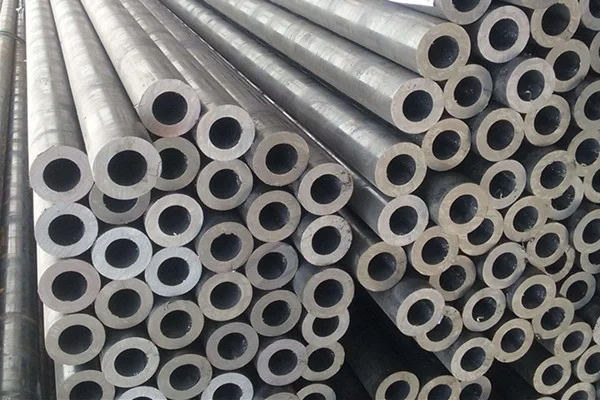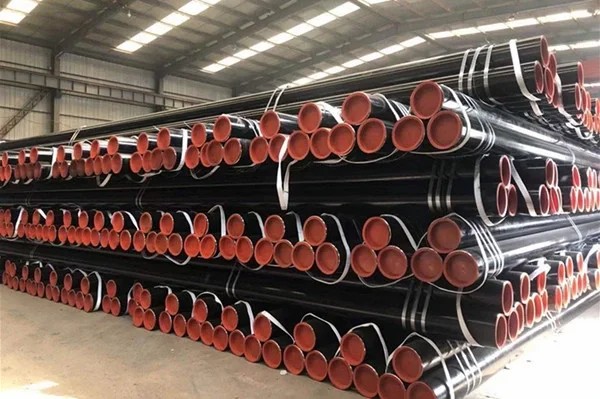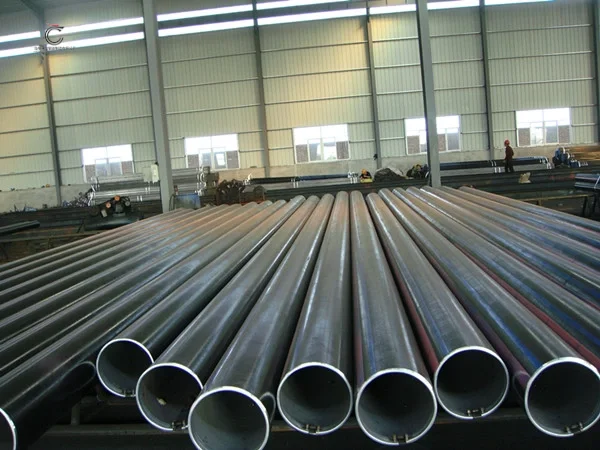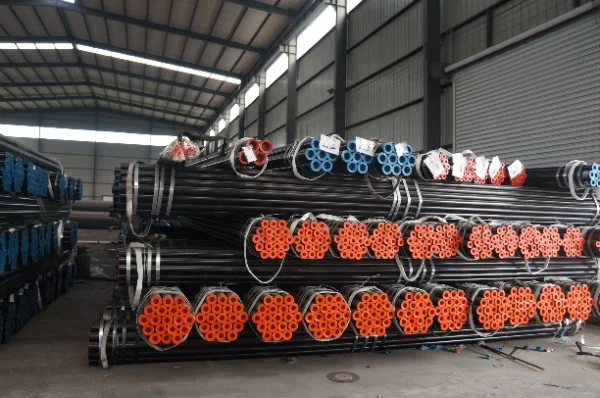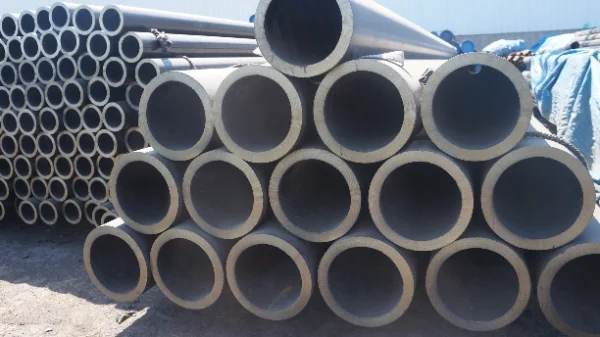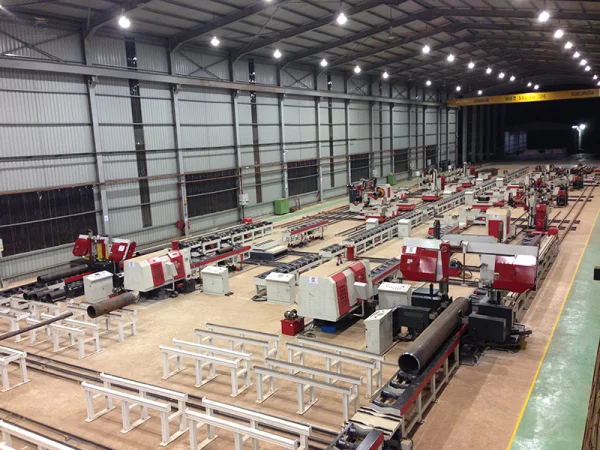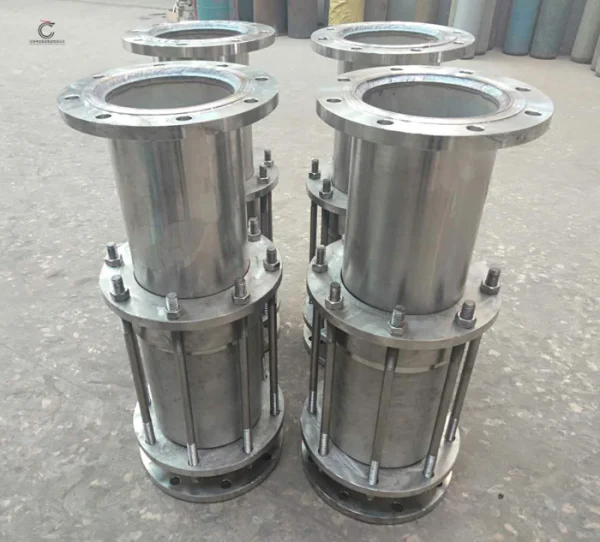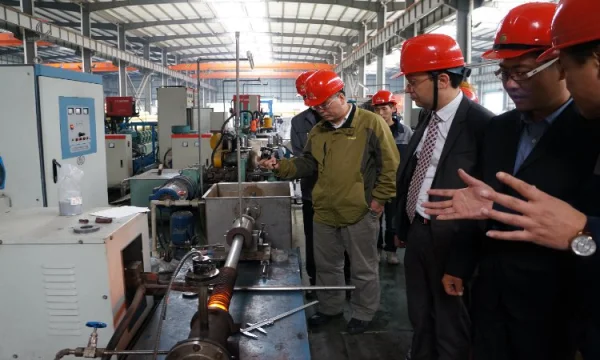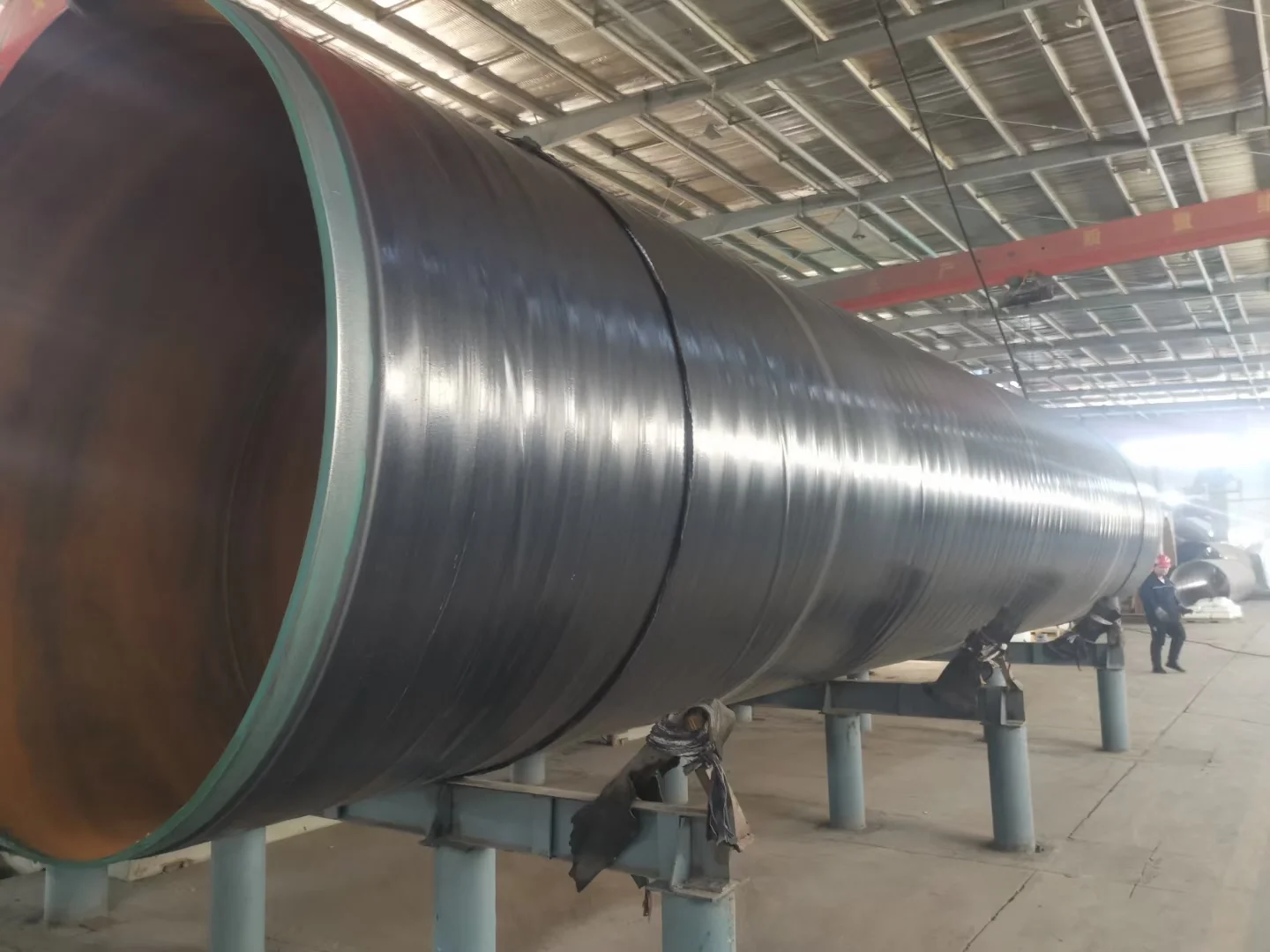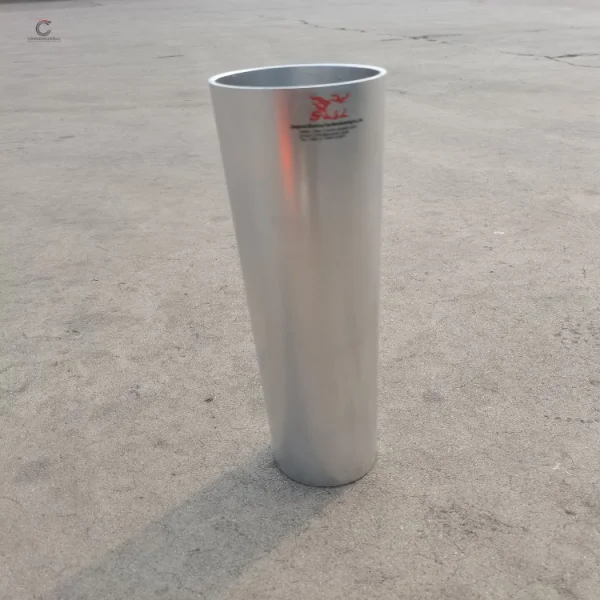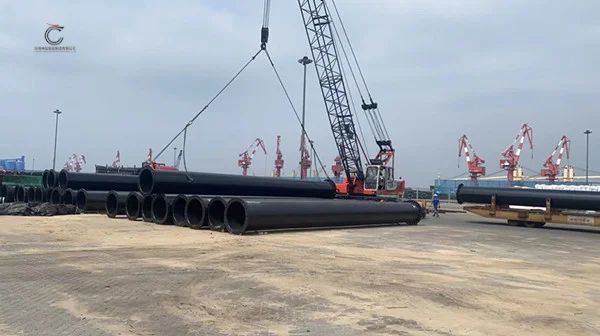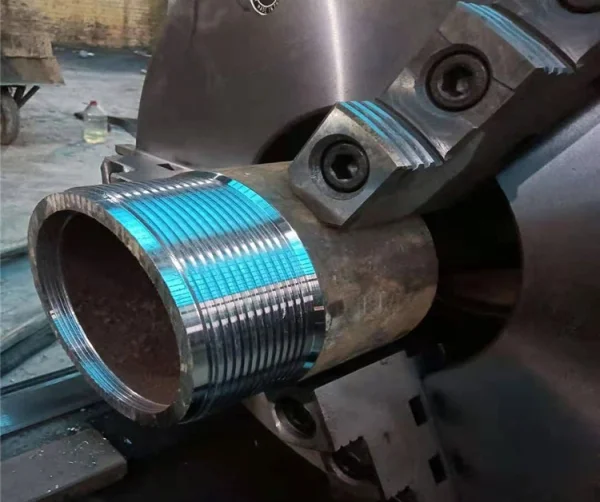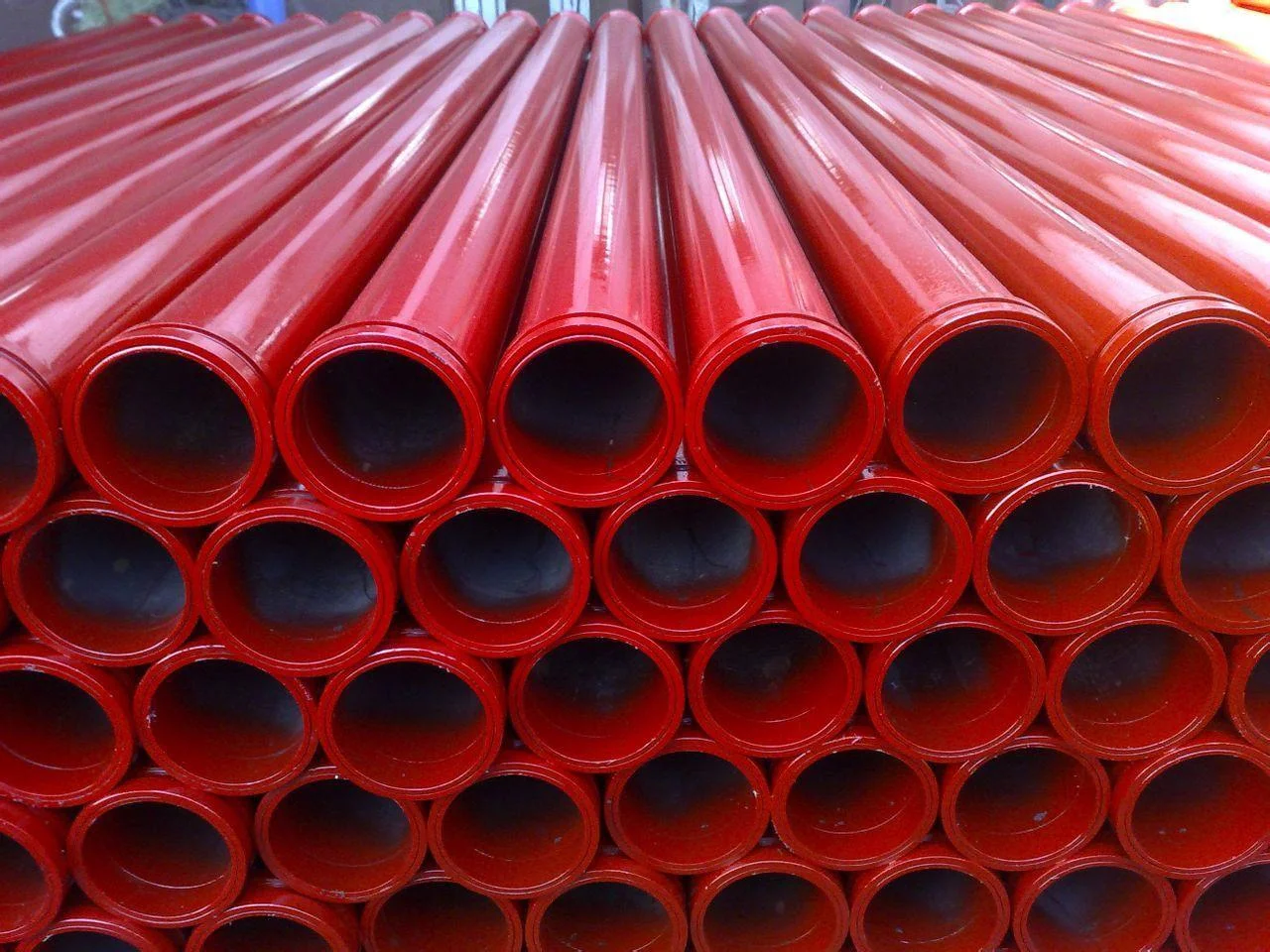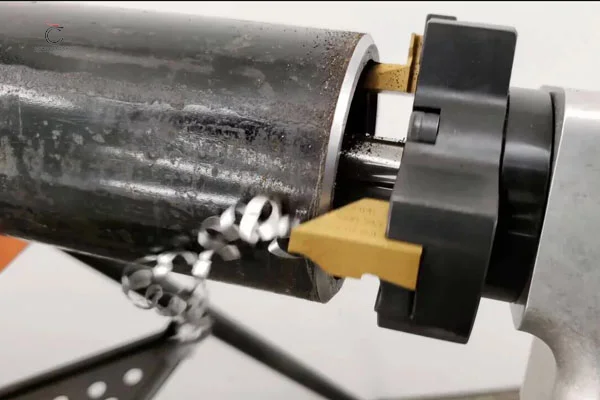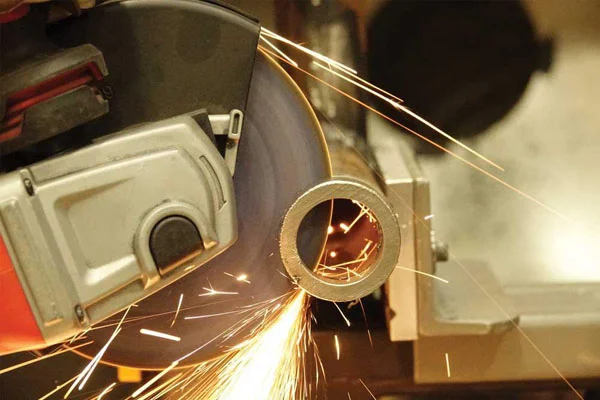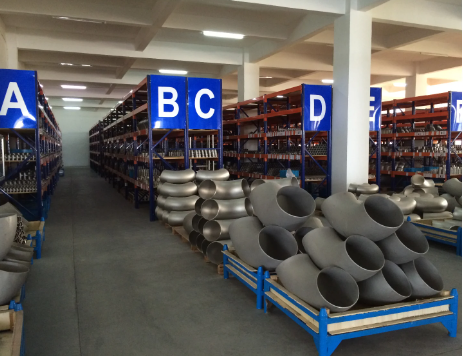Product List
Carbon steel seamless pipe
Product name: Carbon steel seamless pipe,carbon steel pipe, structural pipe, Seamless carbon steel pipe,carbon steel tubing, carbon seamless pipemild steel pipe, mild smls pipe
Materials: GR.B, X42, X56, P11, P22, ST37, ST44, ST52, S235JR, S355JR, STP430.
Standard:API 5L, A106, A53, A335, A333, DIN1629, DIN2448, GOST8731, JIS G3454.
Seamless carbon steel pipe is made of steel ingot or solid tube billet by perforation, and then hot rolling, cold rolling or cold drawing.
Carbon seamless steel pipe is a kind of strip steel. Steel pipe with hollow cross-section, a large number of pipes used to transport fluid, such as the transportation of oil, natural gas, gas, water and some solid materials such as pipes. Steel and round steel and other solid steel compared to the same bending strength in the same bending, lighter weight, is an economic section of steel, is widely used in the manufacture of structural parts and mechanical parts, such as oil drill pipe, Bicycle frames and steel construction scaffolding. The use of carbon seamless steel pipe manufacturing ring parts can improve material utilization, simplify the manufacturing process, save materials and processing time, such as rolling bearing rings, jackets, etc., has been widely used to manufacture steel pipe.
Carbon steel seamless pipe type
Carbon seamless steel pipe, Alloy seamless steel pipe, Milde carbon steel pipe, Hot rolling seamless pipe, Cold drawn seamless pipe
Carbon steel seamless pipe production process
Hot rolling,Cold drawn, thermal expansion.cutting,etc.
Carbon steel seamless pipe specification:
Outer diameter: 1/4”-40”(13.7mm-1016mm)
Wall thickness: 1.5mm-80mm
Length: 3m-14m
Carbon steel seamless pipe application
Widely used in gas & oil conveying, mine and oilfield drilling.
Carbon steel seamless pipe quality inspection:
1. Our factory has its own "experimental testing center".CNAS Laboratory Accreditation Certificate
2.Control quality strictly.The first pass is the quality inspection on the production line,The second pass is full inspection of the production quality .
3.We have got internationally recognized certificates, ISO, CE, LR,Philippine certificate,also support third-party testing,as SGS, BV, ect.
Carbon steel seamless pipe feature
Carbon seamless steel pipe (SMLS) is formed by drawing a solid billet over a piercing rod to create the hollow shell, without welding or seam. It is suitable for bending and flanging. The most advantage is increasing the ability of withstanding higher pressure.n improve material utilization, simplify the manufacturing process, save materials and processing time, such as rolling bearing rings, jackets, etc., has been widely used to manufacture steel pipe.
Widely used for liquid, gas, and steam services both above- and belowground services.
Standard of Carbon steel seamless pipe
ASTM A53 Gr.B | Black and hot-dipped zinc-coated steel pipes welded and seamless |
ASTM A106 Gr.B | Seamless carbon steel for high temperature service |
ASTM SA179 | Seamless cold-drawn low-carbon steel heat-exchanger and condenser tubes |
ASTM SA192 | Seamless carbon steel boiler tubes for high pressure |
ASTM SA210 | Seamless Medium-carbon boiler and super heater tubes |
ASTM A213 | Seamless alloy-steel boiler, super heater, and heat-exchanger tubes |
ASTM A333 GR.6 | seamless and welded carbon and alloy steel pipe intended for use at low temperatures. |
ASTM A335 P9,P11,T22,T91 | Seamless ferritic alloy-steel pipe for high-temperature service |
API Spec 5CT J55/K55/N80/L80/P110/K55 | Seamless steel pipe for casing |
API Spec 5L PSL1/PSL2 Gr.b, X42/46/52/56/65/70 | Seamless steel pipe for line pipe |
DIN 17175 | Seamless steel tube for elevated temperature |
DN2391 | Cold drawn seamless prevision pipe |
DIN 1629 | Seamless circular unalloyed steel tubes subject to special requirements |
Chemical components & mechanical properties
| Standard | Grade | Chemical Components (%) | Mechanical Properties | ||||||
| ASTM A53 | C | Si | Mn | P | S | Tensile STrength(Mpa) | Yield STrength(Mpa) | ||
| A | ≤0.25 | - | ≤0.95 | ≤0.05 | ≤0.06 | ≥330 | ≥205 | ||
| B | ≤0.30 | - | ≤1.2 | ≤0.05 | ≤0.06 | ≥415 | ≥240 | ||
| ASTM A106 | A | ≤0.30 | ≥0.10 | 0.29-1.06 | ≤0.035 | ≤0.035 | ≥415 | ≥240 | |
| B | ≤0.35 | ≥0.10 | 0.29-1.06 | ≤0.035 | ≤0.035 | ≥485 | ≥275 | ||
| ASTM SA179 | A179 | 0.06-0.18 | - | 0.27-0.63 | ≤0.035 | ≤0.035 | ≥325 | ≥180 | |
| ASTM SA192 | A192 | 0.06-0.18 | ≤0.25 | 0.27-0.63 | ≤0.035 | ≤0.035 | ≥325 | ≥180 | |
| API 5L PSL1 | A | 0.22 | - | 0.90 | 0.030 | 0.030 | ≥331 | ≥207 | |
| B | 0.28 | - | 1.20 | 0.030 | 0.030 | ≥414 | ≥241 | ||
| X42 | 0.28 | - | 1.30 | 0.030 | 0.030 | ≥414 | ≥290 | ||
| X46 | 0.28 | - | 1.40 | 0.030 | 0.030 | ≥434 | ≥317 | ||
| X52 | 0.28 | - | 1.40 | 0.030 | 0.030 | ≥455 | ≥359 | ||
| X56 | 0.28 | - | 1.40 | 0.030 | 0.030 | ≥490 | ≥386 | ||
| X60 | 0.28 | - | 1.40 | 0.030 | 0.030 | ≥517 | ≥448 | ||
| X65 | 0.28 | - | 1.40 | 0.030 | 0.030 | ≥531 | ≥448 | ||
| X70 | 0.28 | - | 1.40 | 0.030 | 0.030 | ≥565 | ≥483 | ||
| API 5L PSL2 | B | 0.24 | - | 1.20 | 0.025 | 0.015 | ≥414 | ≥241 | |
| X42 | 0.24 | - | 1.30 | 0.025 | 0.015 | ≥414 | ≥290 | ||
| X46 | 0.24 | - | 1.40 | 0.025 | 0.015 | ≥434 | ≥317 | ||
| X52 | 0.24 | - | 1.40 | 0.025 | 0.015 | ≥455 | ≥359 | ||
| X56 | 0.24 | - | 1.40 | 0.025 | 0.015 | ≥490 | ≥386 | ||
| X60 | 0.24 | - | 1.40 | 0.025 | 0.015 | ≥517 | ≥414 | ||
| X65 | 0.24 | - | 1.40 | 0.025 | 0.015 | ≥531 | ≥448 | ||
| X70 | 0.24 | - | 1.40 | 0.025 | 0.015 | ≥565 | ≥483 | ||
| X80 | 0.24 | - | 1.40 | 0.025 | 0.015 | ≥621 | ≥552 | ||
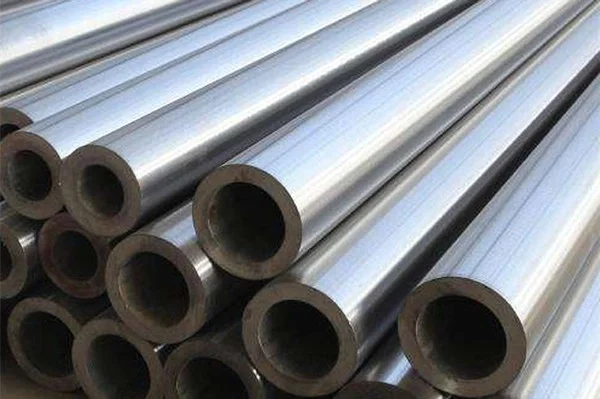


The difference between stainless steel seamless pipe and carbon steel seamless pipe
The difference between the so-called stainless steel seamless pipe and carbon steel seamless pipe mainly refers to the difference in design rules between stainless steel and carbon steel, that is to say, the design rules of these two steels are not universal. These differences are summarized below:
Design rules for stainless steel cannot be applied to carbon steel because there are 3 fundamental differences between stainless steel and carbon steel:
First, stainless steel produces work hardening during cold working, for example, it has anisotropy when bending, that is, the transverse and longitudinal properties are different.
The increase in strength from cold working can be used, although this increase in strength can increase the safety factor to some extent if the bending area is small compared to the total area and this increase is negligible.
Second, the shape of the stress/strain curve is different,
The elastic limit of stainless steel is approximately 50% of the yield stress, which is lower than that of medium carbon steels with respect to the minimum values specified in the standard.
Third, stainless steel has no yield point, usually expressed as ó 0.2, the yield stress is considered as the equivalent value





